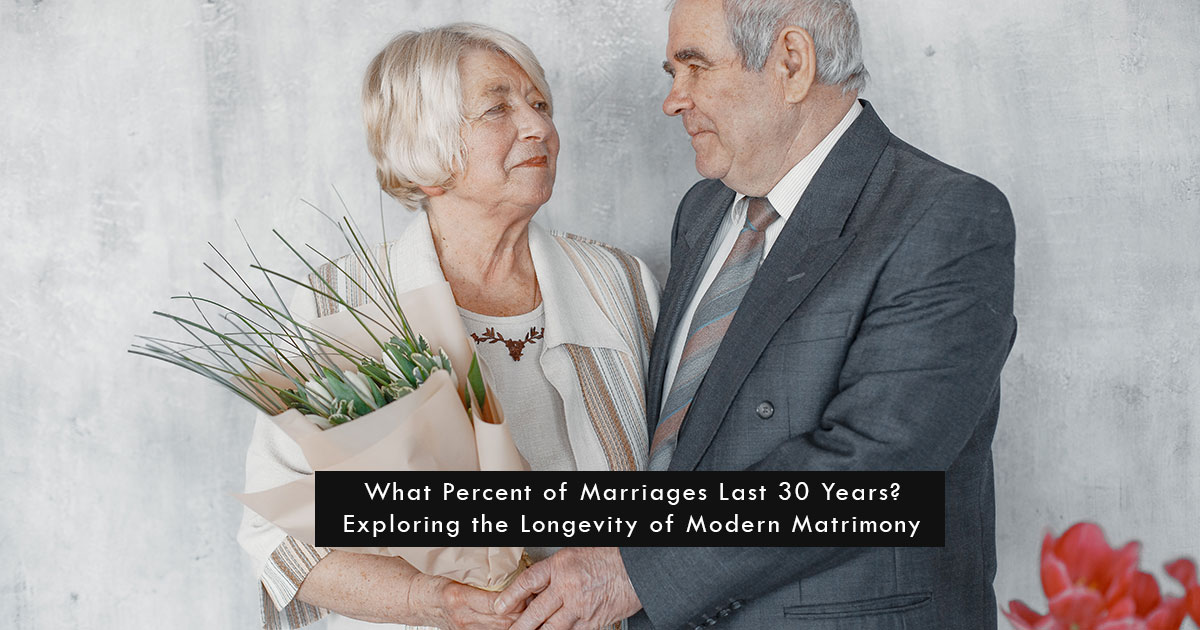In a world where relationships seem to be ever-fluctuating, understanding the dynamics of marriage longevity offers fascinating insights. With changing societal norms and personal expectations, the question of how many marriages last 30 years is more relevant than ever. This article delves into the statistics, trends, and factors influencing the duration of marriages in contemporary society.
Current Statistics on Marriage Longevity
Recent data reveals that approximately 26.2% of marriages reach the 30-year mark. This statistic is particularly striking when compared to the national average marriage length of just 8.2 years. It paints a picture of a significant proportion of marriages withstanding the test of time, surpassing general expectations.
Historical Perspective and Trends
Marriage longevity has evolved over the decades, influenced by various social and economic factors. The divorce rates, which saw a significant rise between the 1970s and 1990s in many countries, have since shown a plateau or decline in richer countries like the US and UK. These historical shifts reflect changing societal attitudes towards marriage and divorce.
Demographic Variations in Marriage Longevity
Marriage duration varies widely across different demographics. The longevity of marriages differs based on race, ethnicity, and age groups, with notable variations in divorce rates among first, second, and third marriages. Understanding these variations provides deeper insights into the diverse experiences of married life.
Geographical and Cultural Differences
The endurance of marriages is not just a matter of personal commitment but also reflects broader geographical and cultural trends. Different countries exhibit varying patterns in marriage and divorce rates, highlighting the influence of cultural norms and societal values on matrimonial stability.
Factors Contributing to Marriages Lasting 30 Years
What makes a marriage last 30 years? Factors like effective communication, mutual respect, shared values, and healthy conflict resolution are key. Additionally, shared interests and equitable distribution of household chores play a significant role in sustaining long-term marriages.
Challenges in Long-term Marriages
Long-term marriages are not without their challenges. Issues such as lack of commitment, financial stress, and substance abuse can strain relationships over time. Addressing these challenges through mutual effort and understanding is crucial for maintaining a healthy, long-lasting marriage.
The Impact of Later Marriages and Remarriages
The trend of marrying later in life and the increasing rate of remarriages are reshaping the landscape of marriage longevity. These factors might influence the likelihood of a marriage reaching the 30-year milestone, reflecting changing attitudes towards love, commitment, and companionship.
Conclusion
The journey to a 30-year marriage is a testament to the enduring power of love and commitment in the face of life’s myriad challenges. While not every marriage reaches this milestone, those that do symbolize the potential for lasting partnerships in the modern world.
FAQs
Are marriages today more likely to last 30 years compared to the past?
Current trends suggest a stabilization or slight decline in divorce rates, indicating that marriages today may have a better chance of lasting longer than those in the past.
What factors contribute most to a marriage lasting 30 years?
Strong communication, mutual respect, shared values, and effective conflict resolution are crucial factors for a marriage to last 30 year.









Leave a Reply